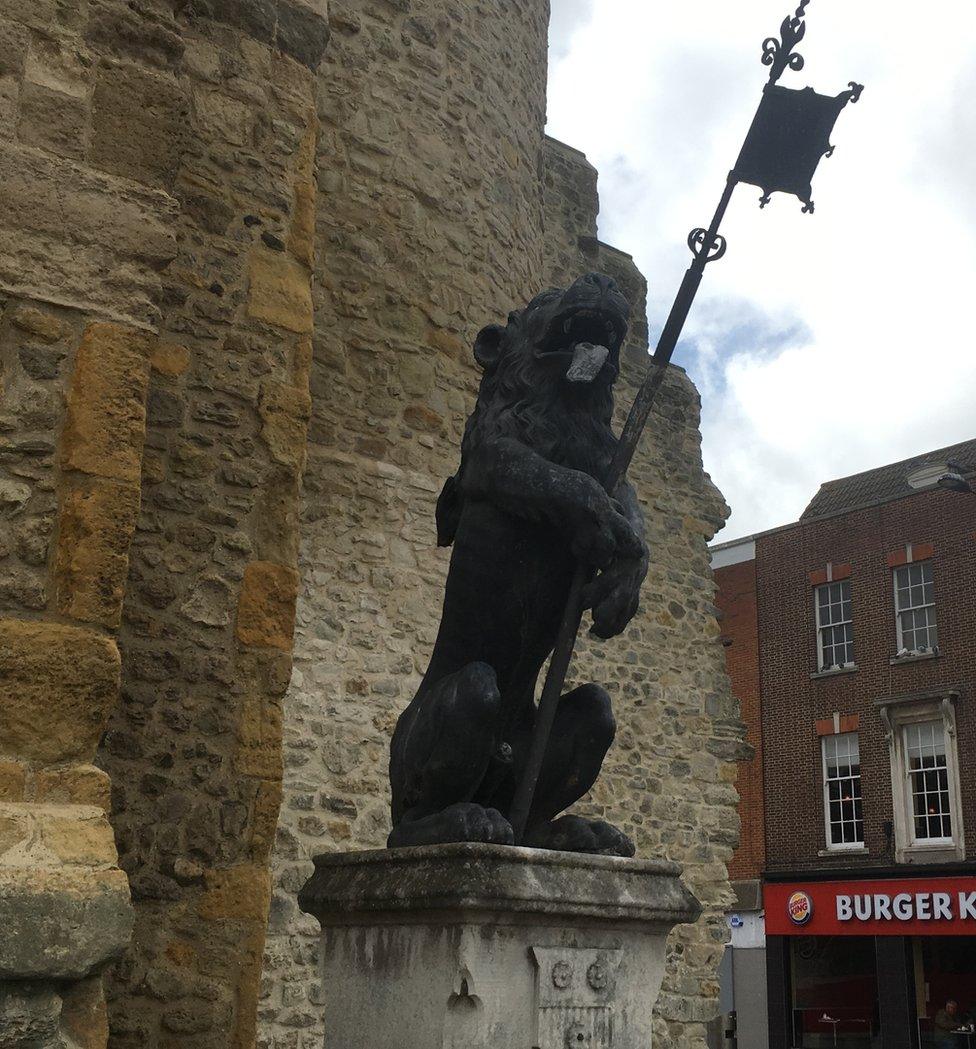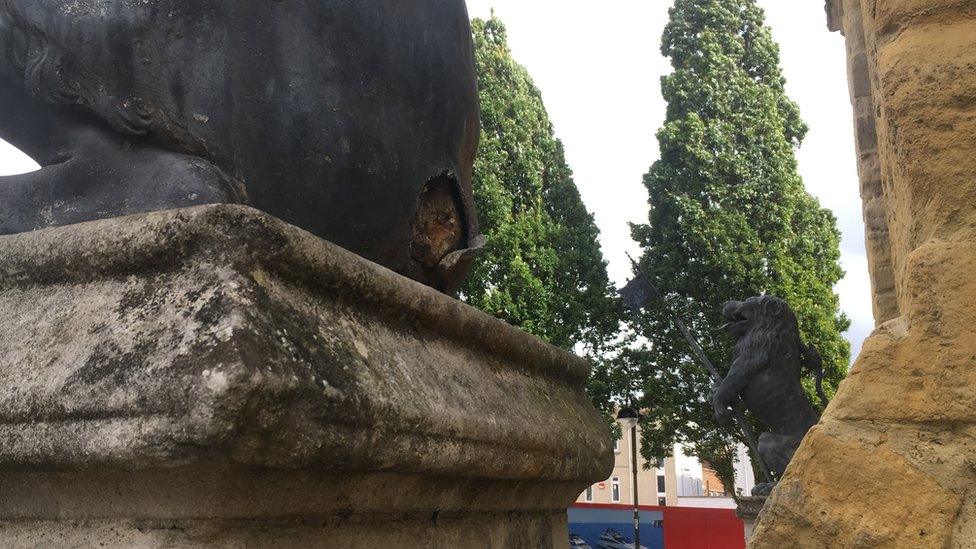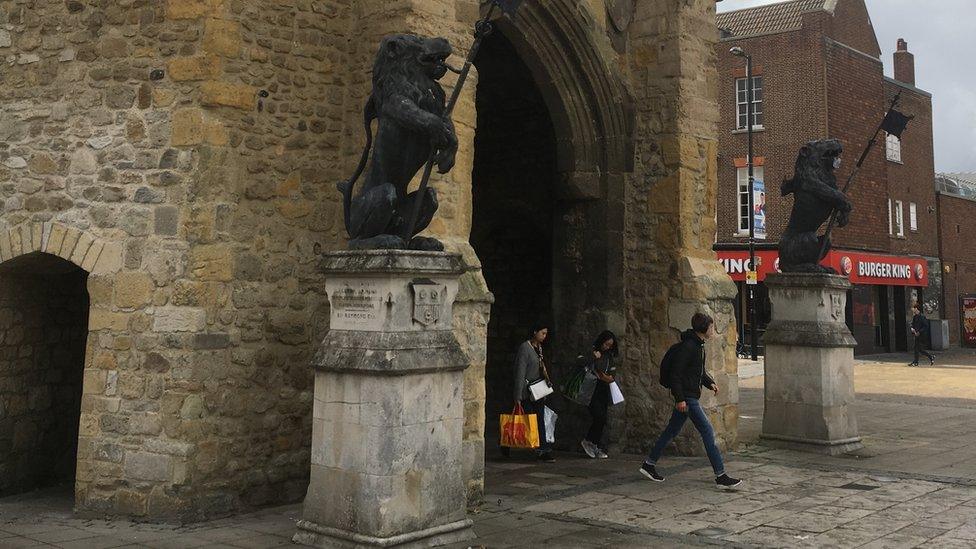Southampton Bargate lion's tail drops off
- Published

The lion's tail is now in the possession of the city council
The tail of a 270-year-old lead lion guarding the historic entrance to Southampton has fallen off.
The lion rampant is one of two which have stood alongside the Bargate since the mid 18th Century.
They are believed to represent the legend of Sir Bevois who is said to have founded Southampton.
Southampton City Council said it had possession of the broken tail and the damage was caused by "natural corrosion" within the statue.
It was found on the ground by the scheduled monument by a council worker on Saturday night.

The damage to the lion is not thought to have been caused deliberately
The lions are thought to have been made by the London sculptor John Cheere and replaced wooden lions which dated back to Tudor times.
Councillor Satvir Kaur, cabinet member for homes and culture said: "After guarding the city for over 275 years, the lions have started to develop a number of cracks over recent years. This is probably caused by the ironwork inside them expanding due to natural corrosion.
"We are currently reviewing repair works to preserve the lions, which have been an important feature of the city for so long."

The lion is one of two at the Bargate, the main entrance to Southampton in the old town walls

The legend of Sir Bevois
The medieval chronicles of mythical Sir Bevois were told by minstrels and storytellers across Russia and Europe.
They tell of his adventures and heroic deeds accompanied by his giant page and squire, Ascupart, armed with a magic sword, Mortglay, and a magical horse, Hirondelle.
They include him being sold to slave merchants by his mother, ending up in the court of the king of Armenia and falling in love with a Muslim princess, Josian.
Sir Bevois is said to have slain two lions while protecting the princess, commemorated in the Bargate statues.
He reputedly returned to England to reclaim his father's land where he founded Southampton.
- Published24 November 2017

- Published16 August 2010